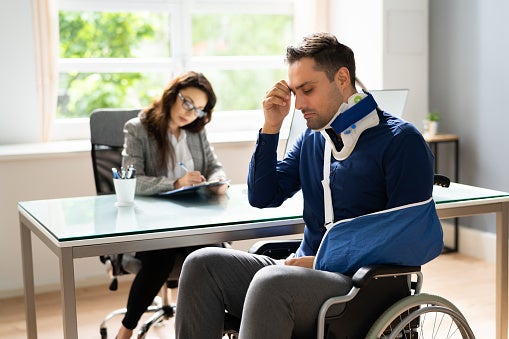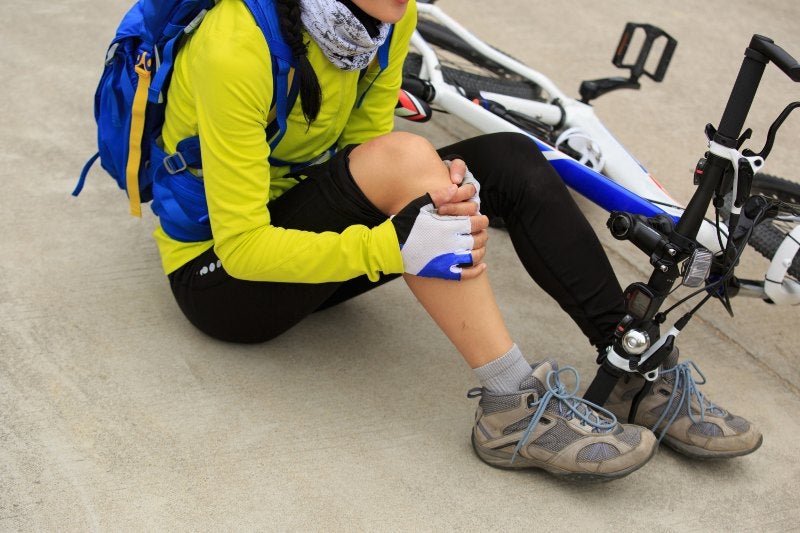-
How Evidence Can Prove Fault in Bicycle Accidents
A bad bicycle accident can be life-changing. If you recently crashed your bike, and it wasn’t your fault, you’re probably asking, “How do I prove the other party was responsible?” This is where evidence enters the picture. Gathering solid proof of the other person’s negligence is the key to securing compensation. Otherwise, it’s your word against theirs.

Why Fault Matters in Bicycle Accidents
Determining who’s at fault in a bicycle accident isn’t just a matter of finger-pointing. It directly affects how much compensation you could receive for your medical bills, lost wages, and emotional distress. When one party’s negligence causes the accident, they become liable for the damages. But if the blame is unclear or partially assigned to you, your compensation may be reduced. That’s how comparative negligence works under California law. It means your payout is reduced by your percentage of fault.
Types of Evidence in Bicycle Accidents
Evidence following a bike accident can take many forms. Stronger and more comprehensive evidence increases your chances of proving fault. Here are some common types:
- Photos and videos: Visual evidence is a compelling form of proof. Photos or videos taken at the scene can show vehicle damage, road conditions, and skid marks or debris that help prove what happened. Video footage from dash cams, nearby surveillance cameras, or a cyclist’s GoPro can be valuable sources of information.
- Police reports: The report filed by the responding officer is an excellent resource. After the accident, officers typically investigate the scene, interview witnesses, and compile their findings. They may note who was at fault based on their assessment. While not always definitive, a police report carries significant weight when determining fault.
- Witness testimonies: Eyewitnesses provide unbiased perspectives on what happened during the accident. Did the driver run a red light, speed, or fail to yield? These statements can bolster your claim as a bike accident victim.
- Medical records: Your injuries are evidence, too. Medical records detailing your condition, the extent of your injuries, and the treatment you received all support your claim that the accident caused considerable harm. The more thorough your medical records, the stronger your case will be.
- Accident reconstruction experts: In complex scenarios, the cause of an accident may not be immediately obvious. In these cases, accident reconstruction experts may be asked to analyze the scene, vehicle damage, and other details to provide their expert opinions on what likely happened.

The Challenges of Obtaining Evidence
Unfortunately, evidence doesn’t just fall into your lap, and some of it disappears quickly after the accident. Here are a few challenges you might encounter:
- Time-sensitive evidence: Photos, videos, and witness statements are time-sensitive. The accident scene changes quickly as debris is cleared away, witnesses move on, and traffic flows normally again. That’s why it’s crucial to collect this information as soon as possible.
- Limited surveillance footage access: Video evidence is not always easy to obtain. Businesses may not keep footage for long, and some may refuse to release it without a formal legal request.
- Delayed police reports: Police reports aren’t always available right away. In some cases, they take days or weeks to be processed and ready for release. Plus, if the police don’t respond to the accident, there won’t be a report at all.
- Uncooperative witnesses: Not all witnesses are eager to get involved. Some may refuse to give a statement or forget important details over time.
- Complex medical records: Your injuries are essential evidence, but they could be underutilized as proof without a clear understanding of medical terminology and how these records relate to your claim.
Why Working with a Lawyer is Essential
Contacting a bicycle accident immediately following the crash makes gathering evidence much easier. Lawyers know which forms of proof are most crucial and how to collect them effectively.
In addition to securing witness statements and requesting police reports, a bicycle accident law firm can subpoena important documents, like surveillance footage, that you may not have access to alone. They can also bring in accident reconstruction experts and medical professionals to strengthen your case. Their negotiation skills compel insurance companies to take the evidence seriously, giving you the best chance at fair compensation.
Ready to Build Your Case? We Can Help
The team at Bakerink, McCusker & Belden knows how overwhelming the aftermath of a bicycle accident can be. With over 35 years of legal experience and a solid track record, we’re here to provide the expert legal guidance you need. We pride ourselves on offering dedicated, compassionate representation to every client. If you’ve been in a bicycle accident and need help gathering evidence to prove fault, contact us today for a free consultation in Tracy, CA.
-
New State Law Could Impact Personal Injury Claims for Bicyclists in California
A Comprehensive Overview of the New AB 1909 Provision
The Old Law: Following Traffic Signals
Previously, bicyclists in California were expected to adhere to traffic signals meant for vehicles. This meant stopping at red lights and only proceeding when the light turned green. While this rule was straightforward, it often failed to account for the challenges and vulnerabilities cyclists face when sharing the road with cars.

The New Law: Following Pedestrian Signals
Under the new AB 1909 provision, bicyclists may now cross intersections when the pedestrian “walk” signal is illuminated. This new rule acknowledges that cyclists often navigate roads using pedestrian pathways, giving them more opportunities to cross with a reduced risk of accidents.
Exceptions to the Rule
It’s important to note that cyclists must still adhere to bike-specific signals when present. These signals are typically found at busy or complex intersections where the movement of bicycles must be more carefully managed. If a bike-specific signal contradicts the pedestrian signal, cyclists must follow the bike signal.
How AB 1909 Could Affect Your Personal Injury Claim
To understand the impact of AB 1909 on personal injury compensation claims, let’s consider a hypothetical scenario. Imagine a bicyclist is hit by a car while crossing an intersection. The driver had a green light and was making an unprotected left turn while the bicyclist was following the pedestrian “walk” signal.
Under the old law, the cyclist would likely be deemed at fault for not adhering to the vehicle traffic signal, reducing the chance of receiving compensation for injuries and damages. With the new law in effect, the cyclist’s actions are legally protected if they were following the pedestrian signal. This shifts the liability to the driver, who should have yielded to the cyclist, just as they would to a pedestrian. Consequently, the cyclist would have a stronger case for receiving personal injury compensation.
Factors Affecting the Settlement of a Bicycle Accident
Offering an average bicycle accident settlement amount is difficult because every incident is unique. The factors influencing the outcome of your claim include:
- Severity of injuries: More severe injuries, such as traumatic brain injuries, spinal cord injuries, or multiple fractures, often require extensive medical treatment, rehab, and long-term care. The pain, suffering, and other emotional impacts can also be significant. These factors are considered when calculating both economic and non-economic damages. The goal is to ensure that the compensation reflects the true cost of the injury to cover immediate and future needs.
- Financial losses: Not all costs associated with a bicycle accident are caused by hospital fees and medical treatments. If your injuries prevent you from returning to work, part of your settlement amount should cover the lost wages you would have earned had you not been injured.
- Clear liability: California is a pure comparative negligence state. It allows injured parties to collect damages even if they are more than 50% at fault. Even so, the court subtracts the percentage of fault from the injured party’s compensation. If the driver is found mostly or entirely responsible for the bicycle accident, the settlement amount will likely be higher.
Common Damages in a Bicycle Accident Settlement
Bicycle accident claims fall under personal injury law, meaning the same kinds of damages that can be collected for other personal injury cases also apply to bike accidents, including:
- Medical expenses related to emergency room visits, hospital stays, surgeries, medications, and ongoing medical care
- Property damage to the bicycle and any other personal property involved in the accident
- Lost wages if the cyclist is unable to work due to their injuries
- Pain and suffering experienced due to the accident
- Long-term disability to cover ongoing care and lifestyle adjustments needed to accommodate the disability
We Help Injured Californian Cyclists Obtain the Maximum Settlement
At Bakerink, McCusker & Belden, we support injured cyclists in California. With over 35 years of legal experience, our bicycle accident lawyers provide the expert guidance you need to obtain the maximum settlement. Consistently ranked among the “Best of Tracy,” as published in the Tracy Press, our firm reflects the highest ethical standards and professional expertise. Contact us today at (209) 835-9592 to request a free, no-obligation case evaluation. We’ll help you seek justice and compensation for your injuries.
RECENT POSTS
categories
- Uncategorized
- Personal Injury
- Estate Planning
- customer reviews
- Financial Planning
- Work Injury
- Tracy Lawyer
- Attorney
- Dog Bites
- Auto Accident
- Slip and Fall
- Car Accident
- Living Trusts
- Trust Administration
- Living Will
- Wrongful Death
- Probate
- advanced health care directive
- About Us
- Russian linguist
- Infographic
- Wills and Trusts
- Will
- Car Crash
- Executor
- Whiplash Injuries
- Estate Taxes
- Slip and Fall Injury
- Auto Accident Claims
- Intestate Succession
- Disinheritance
- Trust Administrators
- Cycle Accident
- Accident
